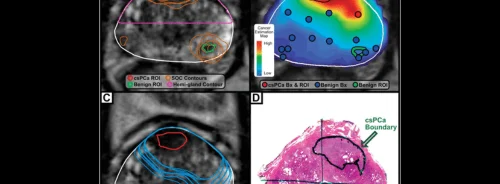HealthManagement, Volume 6 - Issue 4, 2006
Interviewee
Prof. Georg Bongartz
Head General Radiology
University Hospital Basel
Switzerland
Tell Us About the Background and Origins of
MIR.
_ Four radiologists (Paolo Pavone, Italy, Christian Herold, Austria, Gabriel Krestin, The Netherlands and myself) formed the “European Working Group on Management in Radiology” (EWGMR) in 1994, to support young European
Radiologists in the development of management skills. The idea met with strong support from major pharmaceutical companies including Schering, Guerbet, Nycomed – now GE, and Bracco. The first workshops were not only financially supported by them but also guided by senior management from the companies. Later, the scientific aspect of management was taken up by EWGMR and the first Management in Radiology (MIR) congress took place in 1998 in Strasbourg. The European Association of Radiology (EAR) found the initiative very attractive and offered the EWGMR a “new home” as subcommittee to the Professional Organisation Committee of EAR, now ESR.
Has the Organisation of the MIR Annual Congress Changed Since it Began?
_ The annual workshops and meetings were successfully organised by our office in Rome, by Antonio Santoro. Supported by his proactive organisational skills, the initiative became more and more professional. As a result the organisation is now being transferred to the central ESR office in Vienna under the guidance of Peter Baierl. Henrik Silber will organise the next meeting in Oxford 2007, under new incoming MIR Chair, Dr. Nicola Strickland. The MIR board has developed official guidelines; chairmanship lasts two years and the appointment to the board four years. From the initial founding team, only Paolo Pavone and myself are still involved, and both of us will roll out 2007/2008.
How does MIR Address its Multidisciplinary Audience?
_ Besides clear management topics, technical issues in radiological management like data handling and processing are included into the scope of topics. With this, the entire PACS, RIS, Telemedicine, etc. discussion is part of the concept. We try to balance this out and highlight the management aspect of these purely technical topics in radiology. This mixture makes the MIR congress unique.
Why is MIR Such an Important Annual Conference?
_ Good knowledge of management tools, the insight that your problems are identical to those of others and some guidance in how to deal with them is offered in presentations, discussions and handouts. The intense exchange of personal knowledge and the creation of an international network to identify people that you can ask for help in certain situations appear the most important reasons for people to attend the meetings.
What Future Plans for the Development of MIR
are in Place?
_ I hope MIR will gain even larger attention and will be a regular part of the annual ECR conferences. More and more workshops shall be organised to bring education in management closer to all European radiologists. Within the ESR, MIR will probably rise to an independent committee of ESR.
How have New Management Tools Like PACS, Teleradiology etc. Impacted Chairmen and Managers?
_ Strongly! Our working life is now getting away from personal teaching and contacts and more into office-based work. Communication takes place by writing emails and reporting by electronic media. While all this may positively affect workflow and the quality of the work, the interpersonal contacts and the entire social part of our work is endangered. Leading a department via electronic communication is extremely difficult because personal contacts are still one of the main motivators and visibility is mandatory to keep contact with coworkers. We all must face the problems in the new communication systems and address them properly. For this reason, one of the skills we focus on in management workshops is how to be both Chairman and a balanced social manager at the same time.
Is Today’s Emphasis on Productivity in Healthcare Negatively Impacting Good Management?
_ At first glance, yes. But this is one of the challenges to address. Although being competitive can be seen as negative, it also produces creativity and awareness. Healthcare today is a challenging industry where not only the individual patient must be taken care of but also the entire community as “stakeholders”. The incentive for the individual radiologist is not only to be acknowledged as an “experienced radiologist” but also to be successful and straightforward in your business: to have active and motivated co-workers, a high-level infrastructure and to be able to cooperate at an interdisciplinary level.





